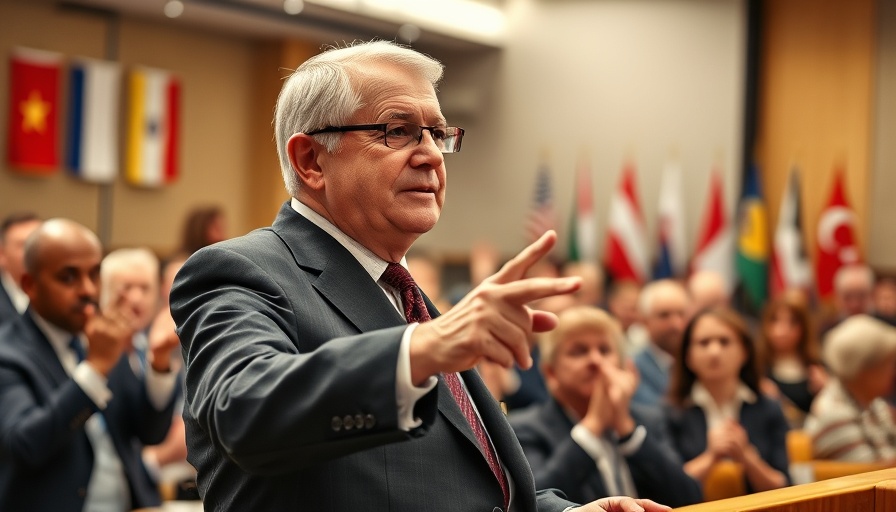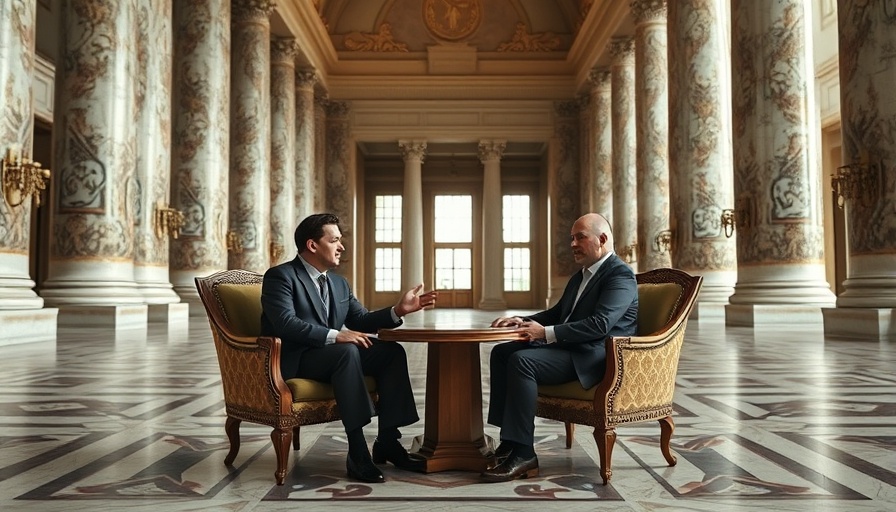
Trump Delivers Vision for Peace in the Middle East
At a pivotal moment in the Middle East, U.S. President Donald Trump, alongside influential world leaders, gathered in Sharm el-Sheikh, Egypt, to discuss a comprehensive peace strategy for Gaza’s future. The summit occurred against the backdrop of a fragile ceasefire agreement between Israel and Hamas, marking a potential turning point after two years of escalating conflict. During his address, Trump emphasized the need for a collective push to overcome historic feuds: "We have a once-in-a-lifetime chance to put the old feuds and bitter hatreds behind us," he declared.
Global Leaders Unite for Peace
The summit attracted nearly three dozen nations, including high-profile leaders such as Turkish President Recep Tayyip Erdoğan and Qatari Emir Tamim bin Hamad Al Thani. Notably absent was Israeli Prime Minister Benjamin Netanyahu, who declined to attend due to a significant Jewish holiday. However, the gathering still held immense significance, as it aimed to solidify Trump's vision for a new era of cooperation in the region.
The Trump Declaration: A Framework for Future Cooperation
At the summit, Trump signed what he termed the “Trump Declaration for Enduring Peace and Prosperity,” which outlines broad commitments from the participating nations. Although the text remains confidential, Trump assured attendees that the document would lay substantial groundwork for a more harmonious future in Gaza. Echoing sentiments of prior agreements like the Abraham Accords, he invited all nations to join the push for peace, generating a sense of hope among attendees and observers alike.
Phase One: A Fragile Beginning
As part of the initial phase of the peace plan, a significant development occurred just before the summit: Hamas released 20 living Israeli hostages as a gesture towards de-escalation. In return, Israel freed around 2,000 Palestinian prisoners. This reciprocal action marked a critical step witnessed with emotional reunions in both Israel and Gaza. Yet, the specter of former hostilities looms large as Trump and leaders pressed for sustained dialogue over longer-term resolutions.
Trump’s Vision: Building Trust and Economic Opportunity
In his Knesset speech, Trump not only proclaimed an end to the violence but also called on the Palestinian people to embrace an era of reconstruction and abandonment of violence. He articulated a hopeful message about turning the tide from destruction to development, emphasizing, "Now is the time to concentrate on building their people up instead of trying to tear Israel down." This sentiment reflects an optimistic roadmap focusing on mutual progress and cooperation.
Embracing Difficult Conversations with Regions Beyond
Trump also extended an olive branch to Iran, stressing that cooperation could yield great benefits over adversity. His comments at the summit hinted at the need for dialogue and negotiation instead of conflict, suggesting that potential sanctions relief could foster better relations in the future. This strategic pivot hints at a broader approach that could reshape long-standing animosities in the region.
Looking Forward: Next Steps on the Path to Peace
Despite the optimism presented during the summit, many challenges persist. Questions remain regarding the actual implementation of the agreements and the inclusion of voices such as the Palestinian Authority, which has navigated complex relations with both Hamas and Israel. Critics insist that to achieve lasting peace, more needs to be done to address the underlying grievances that provoke violence.
Conclusion: A Hopeful Yet Uncertain Future
The Gaza summit has ignited hopes for a brighter future and an end to decades of conflict, yet the journey ahead is fraught with uncertainty. As leaders continue to exchange ideas and negotiate terms, the world watches intently, hopeful but cautious about the transformation being forged before their eyes. With an array of stakeholders engaged in the peace process, the potential for success may hinge on collaboration, honesty, and a collective commitment to overcoming the past.
 Add Row
Add Row  Add
Add 




Write A Comment